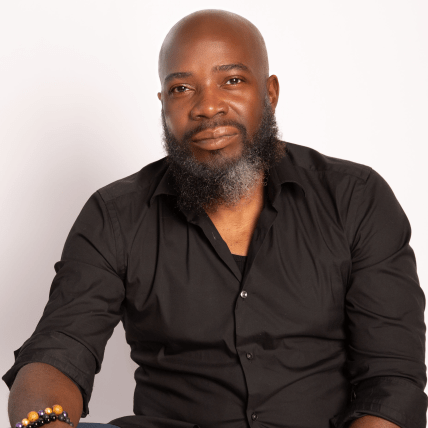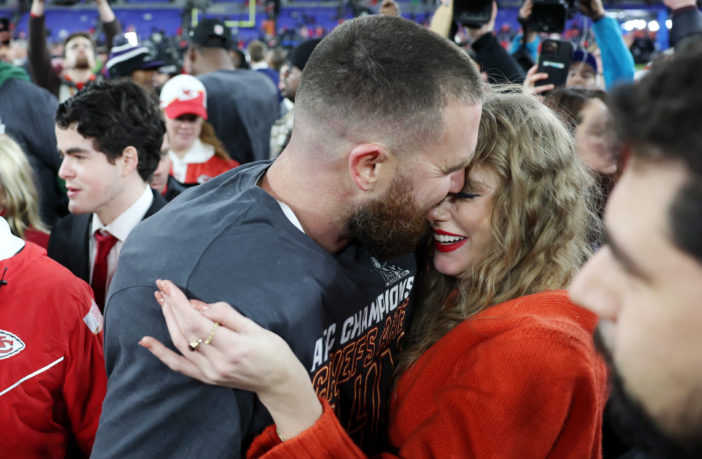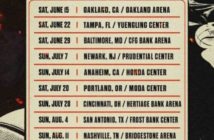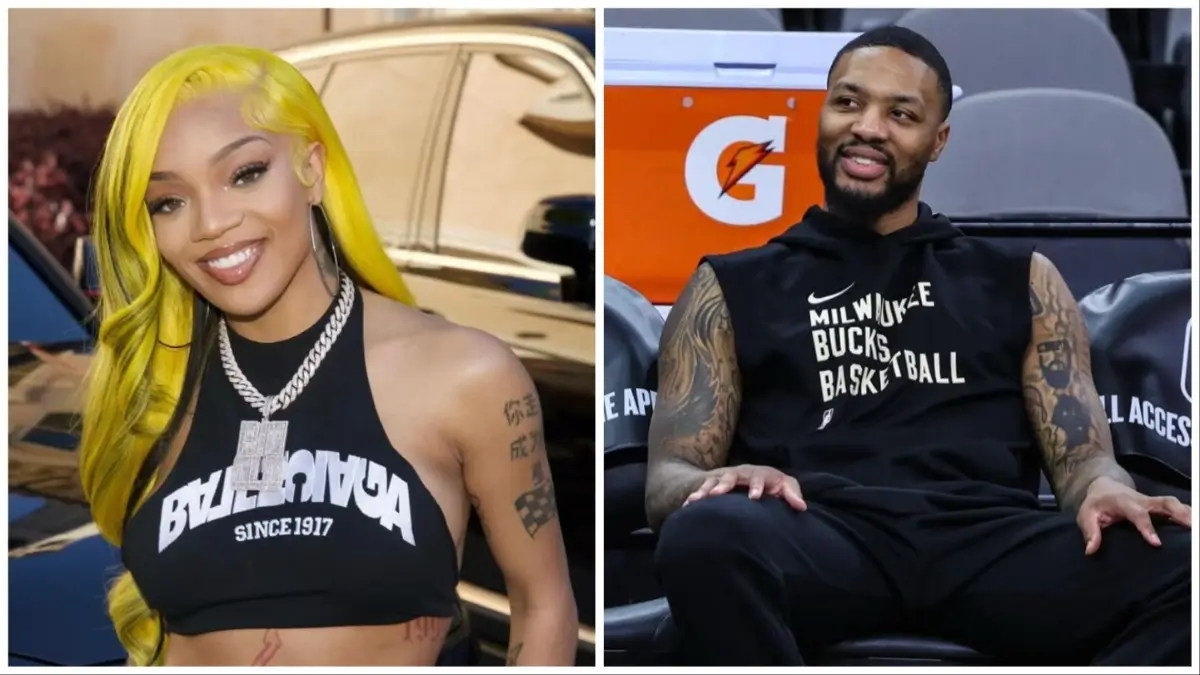Editor’s note: The following article is an op-ed, and the views expressed are the author’s own. Read more opinions on theGrio.
If you’re one of the people who recently read the now-famous profile on Kansas City Chiefs tight end Travis Kelce’s haircut, you might have a serious question about the state of journalism in America:
Are there any Black people at the New York Times?
To be clear, the Times article wasn’t actually about Kelce, his career or even his status as the Prince of the Swifties. Instead, it focused on how Kelce has popularized the haircut known in Black America as “the fade.” To explain the new viral haircut that you can find anywhere Black people exist, Times reporter Alyson Krueger interviewed someone who was astounded by the “sheer number of requests” for the haircut. Interestingly, Krueger managed to find an expert who’s at the vanguard of the urban style: Jeffery Dugas, a white barber in Canada.
“He attributes the demand to not only the fact that Mr. Kelce is dating Taylor Swift, but also because his brother, Jason Kelce, had a viral, shirtless moment at the Chiefs vs. Bills game,” Krueger wrote. “Mr. Dugas is hardly the only barber getting these requests. Across the world, not just the country, men are replicating Mr. Kelce’s hairstyle, claiming it attracts positive attention from friends and love interests and gives them more confidence.”
Stop laughing.
To be fair, this has nothing to do with Kelce, Taylor or haircuts. He didn’t say he invented the style. He probably thinks a “tight fade” is a receiving pattern in the end zone. And, I’m sorry white people, but please stop comparing a fade to a crew cut or a “high & tight”; they’re totally different things. One is an art form, the other is available at Supercuts. If you, like me, are aware that this so-called “viral sensation” has been one of the most popular haircuts in Black America for decades, you need to understand how white people create, invent and innovate. In Christopher Columbus’ America, nothing exists until white people “discover it.”
Even though it’s Black History Month, it’s still important to recognize the contributions of all cultures — even the unseasoned ones. So, to honor the great white creators of the past, we thought we’d list eight innovations, inventions and creations that were conceived or popularized by white culture.
8. Swag Surfing
When Taylor Swift was caught on camera at a game rocking back and forth to Fast Life Youngstaz rap ditty, Black people had been swag surfing in clubs, at cookouts and at family reunions for nearly 25 years. The dance was so eponymous that there was a whole debate on Black Twitter about whether swag surfing was appropriate for people who had the Holy Ghost.
Now that white people have discovered it, white outlets are doing investigative pieces about the “trend” and Taylor Swift has the green light to turn it into a hit song! Maybe it will be resurrected. The last time I swag surfed was when I was the best man at my best friend’s wedding.
He’s been married for 10 years.
7. Anti-Vaxxers
Many people know that an enslaved man named Onesimus introduced inoculation to America, but most people don’t know that the brilliant bondsman also helped spark the first anti-vaccine movement.
James Franklin a white newspaper owner and his brother Benny helped foment Boston’s movement against smallpox inoculation by printing articles and inciting violence. Terrorists even bombed the home of Onesimus’ slave master. Unfortunately, Ben Franklin changed his anti-vax stance after his son died …
From smallpox.
6. The Marlboro Man
On a cold and rainy night in Caswell County, N.C., enslaved blacksmith Stephen Slade fell asleep while tending to the fires that cured tobacco at the forced labor camp where he was imprisoned (Y’all call it a plantation). The leaves turned yellow, which infuriated Abisha Slade, the plantation owner. He calmed down when cigarette manufacturers began paying 10 times the price for the yellowed tobacco.
Even though Abisha Slade didn’t know anything about farming or curing tobacco, he figured out how to make a fortune from Stephen’s innovation. Abisha essentially rented out Stephen to farmers to teach his new curing method. The easy-to-grow, quicker cure transformed North Carolina and Virginia into agricultural powerhouses. Stephen Slade got zero dollars but, to this day, every company in America’s billion-dollar tobacco industry uses Stephen Slade’s bright leaf tobacco.
5. The Original Jokester
Not only was the American form of standup comedy invented by Charles Case, but his idiosyncratic arm movement is also the reason why the final phrase or sentence of a joke is called the “punch line” (You can listen to my podcast about Case’s life featuring KevOnStage here).
Case died from a self-inflicted gunshot wound in 1916, just before his talent agency got into the movie industry by forming Metro Goldwyn Mayer (MGM). After Case’s death, W.C. Fields, one of MGM’s young stars, basically coopted Case’s entire act and became one of the brand-new film industry’s biggest stars. In 1928, Fields copyrighted a song that later became one of his early hit movies, “The Fatal Glass of Beer.”
That song was written by Charlie Case.
4. The First “Jack Move”
While no one can say that Black people invented whiskey, white people definitely deserve some applause for taking most of the credit (and the profit) for the beverage.
In the mid-1800s, an enslaved skilled whiskey distiller named Nearest Green began working on a Tennessee farm teaching people how to produce a smooth, whiskey by using a filtering process brought from Africa by enslaved people. The New York Times reports:
Green was rented out by his owners, a firm called Landis & Green, to farmers around Lynchburg, including Dan Call, a wealthy landowner and preacher who also employed a teenager named Jack Daniel to help make whiskey. Green, already adept at distilling, took Daniel under his wing and, after the Civil War and the end of slavery, went to work for him in his fledgling whiskey operation.
In all likelihood, there were many other men like Green, scattered around the South. Records are spotty, though references to slaves skilled in distilling and whiskey making pop up in slave sales and runaway-slave ads from the early 19th century. But only one of them helped found a whiskey brand that today generates about $3 billion a year in revenue.
To be fair, when I first saw Taylor Swift dance, I couldn’t tell if she was swag surfing or she just had too much Uncle Nearest.
3. The Halftime Heist
In 1992, a Black family was clowning around when they came up with a plan for the most brilliant robbery ever:
They were going to steal the Super Bowl.
The Super Bowl is the Shangri-la of entertainment and capitalism. Every year, corporations pay millions to advertise to television’s biggest captive audience … during the game. Halftime was another story. For most of his existence, the midpoint of sports’ biggest spectacle consisted of great Caucasian entertainment, like Up With People, ice skaters and predominantly white college marching bands.
During the 1992 Super Bowl, more than 20 million people switched the channel to watch Living Color’s halftime Super Bowl show. The NFL, realizing these Black entertainers had pilfered their captive audience, also realized there was an opportunity for more profit and contacted the biggest musical superstar in history – Michael Jackson. The results were immediate. The NFL now admits this is how the Super Bowl halftime show became “a cultural phenomenon and mass media extravaganza ever since.”
Yet when this year‘s Super Bowl halftime performer Usher announced that his performance would pay tribute to the Black stars who came before him, White Twitter had a fit that could only be described as “hissy.”
Better skip listening to the radio, too then. 🙄
— Rose Delaney (@rdelaney5) February 4, 2024
Disgusting vile racist trash!
— Stocks and Crypto Plays (@AquariusAngel24) February 4, 2024
Newspaper race baiting just what we need on a Saturday morning thanks 😱
— SYFYverse (@SYFYverse) February 3, 2024
Apparently, it’s OK to profit from the bodies, athleticism, art, creativity, culture, laughter and even the business ideas of Black people, but talking about the race of the people who actually create that profit is a bridge too far. Or maybe they’d prefer to see W.C. Fields doing an Irish clog dance as he drinks Jack Daniels while smoking a Marlboro cigarette.

Now that’s some good white entertainment!
2. Taylor Swift
Let’s get this out of the way: Every form of popular music this country has ever known comes from Black Americans, including country, jazz, blues, hip-hop and Taylor Swift’s unique brand of hillbilly pop-rock. But when it comes to ‘n’ roll, the riffs, the rhythm and the entire sound did not exist before a Black woman named Sister Rosetta Tharpe came up with it. She invented it. That’s what the word means.
Of course, ”the man who invented rock ‘n’ roll” — Sun Records executive Sam Phillips, never worked with Tharpe. But because he worked with young white musicians who stole from Rosetta Tharpe like Jerry Lee Lewis, Johnny Cash and some young dude named Elvis something (they all sound alike to me), he just started telling people that he invented the genre and it stuck. Phillips was inducted into the very first class of the Rock & Roll Hall of Fame in 1986, alongside the “King of Rock and Roll” Elvis and the “Pioneer of Rock and Roll” Jerry Lee Lewis, both of whom recorded covers of Tharpe’s music.
Even though none of it (including Taylor Swift) would exist without Tharpe, for some reason, she was not inducted into the Hall of Fame for the music she pioneered until 2018.
And that, dear reader, is how white people invent things.
1. America
The Founding Fathers conceived of a new nation … but it wasn’t a democracy. It wasn’t a republic. Hell, it wasn’t even a good business plan!
Their original idea was that it would be governed and ruled by a collective of white, male landowners chosen by white male landowners. Black people changed that. There was no definition for who would be considered an American citizen until Black people changed that. The heavily indebted nation would have collapsed economically except for the labor and intellectual property extracted from Black people under the threat of violence. The American education system as we know it did not exist until Black South Carolinians invented it.
And white people did some stuff, too.

Michael Harriot is an economist, cultural critic and championship-level Spades player. His New York Times bestseller Black AF History: The Unwhitewashed Story of America is available everywhere books are sold.
Never miss a beat: Get our daily stories straight to your inbox with theGrio’s newsletter.



